Deck 5: Polynomials, Polynomial Functions, and Factoring
Question
Question
Question
Question
Question
Question
Question
Question
Question
Question
Question
Question
Question
Question
Question
Question
Question
Question
Question
Question
Question
Question
Question
Question
Question
Question
Question
Question
Question
Question
Question
Question
Question
Question
Question
Question
Question
Question
Question
Question
Question
Question
Question
Question
Question
Question
Question
Question
Question
Question
Question
Question
Question
Question
Question
Question
Question
Question
Question
Question
Question
Question
Question
Question
Question
Question
Question
Question
Question
Question
Question
Question
Question
Question
Question
Question
Question
Question
Question
Question

Unlock Deck
Sign up to unlock the cards in this deck!
Unlock Deck
Unlock Deck
1/127
Play
Full screen (f)
Deck 5: Polynomials, Polynomial Functions, and Factoring
1
Use the graph to estimate the average number of minutes a woman exercised per week if her average monthly weight loss was 4.4 pounds. A) 115 min B) 120 min C) 135 min D) 127 min Answer: B Determine whether the graph shown is the graph of a polynomial function.
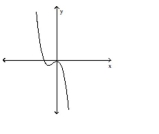
A) Yes
B) No

A) Yes
B) No
A
2
Find the indicated function value.
Find when .
A)
B) 26
C) 6
D) 42
Find when .
A)
B) 26
C) 6
D) 42
D
3
Give the requested components for the polynomial.
; leading term and leading coefficient of the polynomial
A) leading term: ; leading coefficient: 5
B) leading term: ; leading coefficient: 1
C) leading term: ; leading coefficient: 13
D) leading term: ; leading coefficient: 13
; leading term and leading coefficient of the polynomial
A) leading term: ; leading coefficient: 5
B) leading term: ; leading coefficient: 1
C) leading term: ; leading coefficient: 13
D) leading term: ; leading coefficient: 13
B
4
Find the indicated function value.
Find when
A) 0
B)
C) 1
D) 1
Find when
A) 0
B)
C) 1
D) 1

Unlock Deck
Unlock for access to all 127 flashcards in this deck.
Unlock Deck
k this deck
5
Solve the problem.
A rocket is stopped 28 feet from a satellite when it begins accelerating away from the satellite at a constant rate of 10 feet per second per second. The distance between the rocket and the satellite is given by the polynomial . Find the distance between the rocket and the satellite 9 seconds after the rocket started moving.
A)
B)
C)
D)
A rocket is stopped 28 feet from a satellite when it begins accelerating away from the satellite at a constant rate of 10 feet per second per second. The distance between the rocket and the satellite is given by the polynomial . Find the distance between the rocket and the satellite 9 seconds after the rocket started moving.
A)
B)
C)
D)

Unlock Deck
Unlock for access to all 127 flashcards in this deck.
Unlock Deck
k this deck
6
Use the graph to estimate the average number of minutes a woman exercised per week if her average monthly weight loss was 4.4 pounds. A) 115 min B) 120 min C) 135 min D) 127 min Answer: B Determine whether the graph shown is the graph of a polynomial function.
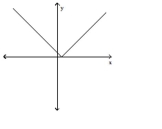
A) Yes
B) No

A) Yes
B) No

Unlock Deck
Unlock for access to all 127 flashcards in this deck.
Unlock Deck
k this deck
7
Solve the problem.
The following table shows the number of speeding tickets issued in a certain state for the past five years. The polynomial function f(x) = -0.63x3 + 0.55x² + 61.16x + 2439.2 models the number of speeding tickets issued over the past five years. Use this function to predict the number of speeding tickets issued in year 15. Round to the nearest whole number.
A) 437 speeding tickets issued
B) 1354 speeding tickets issued
C) -1075 speeding tickets issued
D) 1339 speeding tickets issued
The following table shows the number of speeding tickets issued in a certain state for the past five years. The polynomial function f(x) = -0.63x3 + 0.55x² + 61.16x + 2439.2 models the number of speeding tickets issued over the past five years. Use this function to predict the number of speeding tickets issued in year 15. Round to the nearest whole number.
A) 437 speeding tickets issued
B) 1354 speeding tickets issued
C) -1075 speeding tickets issued
D) 1339 speeding tickets issued

Unlock Deck
Unlock for access to all 127 flashcards in this deck.
Unlock Deck
k this deck
8
Use the graph to estimate the average number of minutes a woman exercised per week if her average monthly weight loss was 4.4 pounds. A) 115 min B) 120 min C) 135 min D) 127 min Answer: B Determine whether the graph shown is the graph of a polynomial function.
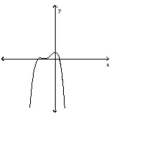
A) Yes
B) No

A) Yes
B) No

Unlock Deck
Unlock for access to all 127 flashcards in this deck.
Unlock Deck
k this deck
9
Find the indicated function value.
Find when
A) 3
B) 43
C)
D) 29
Find when
A) 3
B) 43
C)
D) 29

Unlock Deck
Unlock for access to all 127 flashcards in this deck.
Unlock Deck
k this deck
10
Use the graph to estimate the average number of minutes a woman exercised per week if her average monthly weight loss was 4.4 pounds. A) 115 min B) 120 min C) 135 min D) 127 min Answer: B Determine whether the graph shown is the graph of a polynomial function.
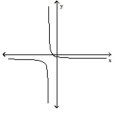
A) Yes
B) No

A) Yes
B) No

Unlock Deck
Unlock for access to all 127 flashcards in this deck.
Unlock Deck
k this deck
11
Use the Leading Coefficient Test to determine the end behavior of the polynomial function. Then use this end behavior to match the function with its graph.
A) rises to the left and rises to the right
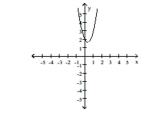
B) rises to the left and falls to the right
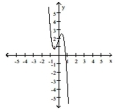
C) falls to the left and falls to the right
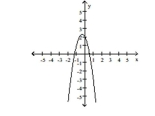
D) falls to the left and rises to the right
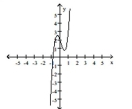
A) rises to the left and rises to the right

B) rises to the left and falls to the right

C) falls to the left and falls to the right

D) falls to the left and rises to the right


Unlock Deck
Unlock for access to all 127 flashcards in this deck.
Unlock Deck
k this deck
12
Find the indicated function value.
Find when
A) 10
B) 14
C) 8
D) 2
Find when
A) 10
B) 14
C) 8
D) 2

Unlock Deck
Unlock for access to all 127 flashcards in this deck.
Unlock Deck
k this deck
13
Use the Leading Coefficient Test to determine the end behavior of the polynomial function. Then use this end behavior to match the function with its graph.
A) rises to the left and rises to the right
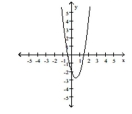
B) falls to the left and falls to the right
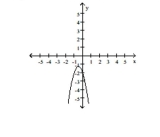
C) rises to the left and falls to the right

D) falls to the left and rises to the right
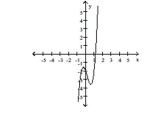
A) rises to the left and rises to the right

B) falls to the left and falls to the right

C) rises to the left and falls to the right

D) falls to the left and rises to the right


Unlock Deck
Unlock for access to all 127 flashcards in this deck.
Unlock Deck
k this deck
14
Give the requested components for the polynomial.
; the leading term and the coefficient of each term
A) leading term: 10; coefficients: , and 0
B) leading term: ; coefficients: , and 3
C) leading term: 8 ; coefficients: 8,5 , and 1
D) leading term: ; coefficients: , and 3
; the leading term and the coefficient of each term
A) leading term: 10; coefficients: , and 0
B) leading term: ; coefficients: , and 3
C) leading term: 8 ; coefficients: 8,5 , and 1
D) leading term: ; coefficients: , and 3

Unlock Deck
Unlock for access to all 127 flashcards in this deck.
Unlock Deck
k this deck
15
Give the requested components for the polynomial.
; the degree of the polynomial and the leading coefficient of the polynomial.
A) degrees: 3,2 , and 1 ; coefficients: , and 4
B) degree: ; coefficient: 3
C) degree: 3 ; coefficient:
D) degrees: , and 4 ; coefficients: 3,2 , and 0
; the degree of the polynomial and the leading coefficient of the polynomial.
A) degrees: 3,2 , and 1 ; coefficients: , and 4
B) degree: ; coefficient: 3
C) degree: 3 ; coefficient:
D) degrees: , and 4 ; coefficients: 3,2 , and 0

Unlock Deck
Unlock for access to all 127 flashcards in this deck.
Unlock Deck
k this deck
16
Use the graph to estimate the average number of minutes a woman exercised per week if her average monthly weight loss was 4.4 pounds. A) 115 min B) 120 min C) 135 min D) 127 min Answer: B Determine whether the graph shown is the graph of a polynomial function.
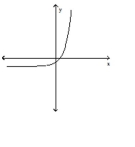
A) Yes
B) No

A) Yes
B) No

Unlock Deck
Unlock for access to all 127 flashcards in this deck.
Unlock Deck
k this deck
17
Use the graph to estimate the average number of minutes a woman exercised per week if her average monthly weight loss was 4.4 pounds. A) 115 min B) 120 min C) 135 min D) 127 min Answer: B Determine whether the graph shown is the graph of a polynomial function.
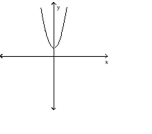
A) Yes
B) No

A) Yes
B) No

Unlock Deck
Unlock for access to all 127 flashcards in this deck.
Unlock Deck
k this deck
18
Give the requested components for the polynomial.
; degree of each term and degree of the polynomial
A) degrees: , 0; degree of polynomial: 12
B) degrees: ; degree of polynomial: 19
C) degrees: ; degree of polynomial:
D) degrees: ; degree of polynomial: 5
; degree of each term and degree of the polynomial
A) degrees: , 0; degree of polynomial: 12
B) degrees: ; degree of polynomial: 19
C) degrees: ; degree of polynomial:
D) degrees: ; degree of polynomial: 5

Unlock Deck
Unlock for access to all 127 flashcards in this deck.
Unlock Deck
k this deck
19
Use the Leading Coefficient Test to determine the end behavior of the polynomial function. Then use this end behavior to match the function with its graph.
A) rises to the left and falls to the right
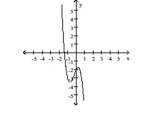
B) falls to the left and falls to the right
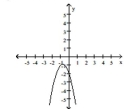
C) falls to the left and rises to the right
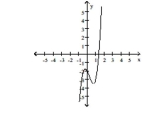
D) rises to the left and rises to the right
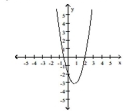
A) rises to the left and falls to the right

B) falls to the left and falls to the right

C) falls to the left and rises to the right

D) rises to the left and rises to the right


Unlock Deck
Unlock for access to all 127 flashcards in this deck.
Unlock Deck
k this deck
20
Give the requested components for the polynomial.
; the degree of each term and the coefficient of each term
A) degrees: 1 and 5; coefficients: and 2
B) degrees: 5 and 2; coefficients: 1 and
C) degrees: 1 and ; coefficients: 5 and 2
D) degrees: 5 and 2; coefficients: 0 and 10
; the degree of each term and the coefficient of each term
A) degrees: 1 and 5; coefficients: and 2
B) degrees: 5 and 2; coefficients: 1 and
C) degrees: 1 and ; coefficients: 5 and 2
D) degrees: 5 and 2; coefficients: 0 and 10

Unlock Deck
Unlock for access to all 127 flashcards in this deck.
Unlock Deck
k this deck
21
Add the polynomials. Assume all variable exponents represent whole numbers.
A)
B)
C)
D)
A)
B)
C)
D)

Unlock Deck
Unlock for access to all 127 flashcards in this deck.
Unlock Deck
k this deck
22
Add the polynomials. Assume all variable exponents represent whole numbers.
A)
B)
C)
D)
A)
B)
C)
D)

Unlock Deck
Unlock for access to all 127 flashcards in this deck.
Unlock Deck
k this deck
23
Use the Leading Coefficient Test to determine the end behavior of the polynomial function. Then use this end behavior to match the function with its graph.
A) rises to the left and rises to the right
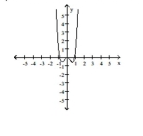
B) falls to the left and falls to the right
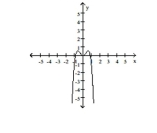
C) rises to the left and falls to the right
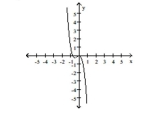
D) falls to the left and rises to the right
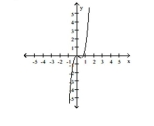
A) rises to the left and rises to the right

B) falls to the left and falls to the right

C) rises to the left and falls to the right

D) falls to the left and rises to the right


Unlock Deck
Unlock for access to all 127 flashcards in this deck.
Unlock Deck
k this deck
24
Subtract the polynomials. Assume all variable exponents represent whole numbers.
A)
B)
C)
D)
A)
B)
C)
D)

Unlock Deck
Unlock for access to all 127 flashcards in this deck.
Unlock Deck
k this deck
25
Subtract the polynomials. Assume all variable exponents represent whole numbers.
A)
B)
C)
D)
A)
B)
C)
D)

Unlock Deck
Unlock for access to all 127 flashcards in this deck.
Unlock Deck
k this deck
26
Solve the problem.
A herd of bison is introduced to a wildlife refuge. The number of bison, , after years is described by the polynomial function . Use the Leading Coefficient Test to determine the graph's end behavior. What does this mean about what will eventually happen to the bison population?
A) The bison population in the refuge will be displaced by "oil" wells.
B) The bison population in the refuge will grow out of control.
C) The bison population in the refuge will reach a constant amount greater than 0 .
D) The bison population in the refuge will die out.
A herd of bison is introduced to a wildlife refuge. The number of bison, , after years is described by the polynomial function . Use the Leading Coefficient Test to determine the graph's end behavior. What does this mean about what will eventually happen to the bison population?
A) The bison population in the refuge will be displaced by "oil" wells.
B) The bison population in the refuge will grow out of control.
C) The bison population in the refuge will reach a constant amount greater than 0 .
D) The bison population in the refuge will die out.

Unlock Deck
Unlock for access to all 127 flashcards in this deck.
Unlock Deck
k this deck
27
Subtract the polynomials. Assume all variable exponents represent whole numbers.
A)
B)
C)
D)
A)
B)
C)
D)

Unlock Deck
Unlock for access to all 127 flashcards in this deck.
Unlock Deck
k this deck
28
Add the polynomials. Assume all variable exponents represent whole numbers.
A)
В)
C)
D)
A)
В)
C)
D)

Unlock Deck
Unlock for access to all 127 flashcards in this deck.
Unlock Deck
k this deck
29
Subtract the polynomials. Assume all variable exponents represent whole numbers.
A)
B)
C)
D)
A)
B)
C)
D)

Unlock Deck
Unlock for access to all 127 flashcards in this deck.
Unlock Deck
k this deck
30
Add the polynomials. Assume all variable exponents represent whole numbers.
A)
B)
C)
D)
A)
B)
C)
D)

Unlock Deck
Unlock for access to all 127 flashcards in this deck.
Unlock Deck
k this deck
31
Add the polynomials. Assume all variable exponents represent whole numbers.
A)
B)
C)
D)
A)
B)
C)
D)

Unlock Deck
Unlock for access to all 127 flashcards in this deck.
Unlock Deck
k this deck
32
Subtract the polynomials. Assume all variable exponents represent whole numbers.
A)
B)
C)
D)
A)
B)
C)
D)

Unlock Deck
Unlock for access to all 127 flashcards in this deck.
Unlock Deck
k this deck
33
Add the polynomials. Assume all variable exponents represent whole numbers.
A)
B)
C)
D)
A)
B)
C)
D)

Unlock Deck
Unlock for access to all 127 flashcards in this deck.
Unlock Deck
k this deck
34
Subtract the polynomials. Assume all variable exponents represent whole numbers.
A)
B)
C)
D)
A)
B)
C)
D)

Unlock Deck
Unlock for access to all 127 flashcards in this deck.
Unlock Deck
k this deck
35
Use the Leading Coefficient Test to determine the end behavior of the polynomial function. Then use this end behavior to match the function with its graph.
A) falls to the left and falls to the right
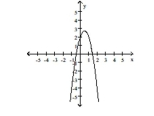
B) rises to the left and falls to the right

C) rises to the left and rises to the right
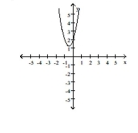
D) falls to the left and rises to the right
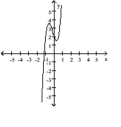
A) falls to the left and falls to the right

B) rises to the left and falls to the right

C) rises to the left and rises to the right

D) falls to the left and rises to the right


Unlock Deck
Unlock for access to all 127 flashcards in this deck.
Unlock Deck
k this deck
36
Add the polynomials. Assume all variable exponents represent whole numbers.
A)
B)
C)
D)
A)
B)
C)
D)

Unlock Deck
Unlock for access to all 127 flashcards in this deck.
Unlock Deck
k this deck
37
Add the polynomials. Assume all variable exponents represent whole numbers.
A)
B)
C)
D)
A)
B)
C)
D)

Unlock Deck
Unlock for access to all 127 flashcards in this deck.
Unlock Deck
k this deck
38
Add the polynomials. Assume all variable exponents represent whole numbers.
A)
B)
C)
D)
A)
B)
C)
D)

Unlock Deck
Unlock for access to all 127 flashcards in this deck.
Unlock Deck
k this deck
39
Add the polynomials. Assume all variable exponents represent whole numbers.
A)
B)
C)
D)
A)
B)
C)
D)

Unlock Deck
Unlock for access to all 127 flashcards in this deck.
Unlock Deck
k this deck
40
Add the polynomials. Assume all variable exponents represent whole numbers.
A)
B)
C)
D)
A)
B)
C)
D)

Unlock Deck
Unlock for access to all 127 flashcards in this deck.
Unlock Deck
k this deck
41
Multiply the monomial and the polynomial. Assume any variable exponents represent whole numbers.
A)
B)
C)
D)
A)
B)
C)
D)

Unlock Deck
Unlock for access to all 127 flashcards in this deck.
Unlock Deck
k this deck
42
Find the product. Assume all variable exponents represent whole numbers.
A)
B)
C)
D)
A)
B)
C)
D)

Unlock Deck
Unlock for access to all 127 flashcards in this deck.
Unlock Deck
k this deck
43
Find the product. Assume all variable exponents represent whole numbers.
A)
B)
C)
D)
A)
B)
C)
D)

Unlock Deck
Unlock for access to all 127 flashcards in this deck.
Unlock Deck
k this deck
44
Multiply the monomial and the polynomial. Assume any variable exponents represent whole numbers.
A)
B)
C)
D)
A)
B)
C)
D)

Unlock Deck
Unlock for access to all 127 flashcards in this deck.
Unlock Deck
k this deck
45
Find the product. Assume all variable exponents represent whole numbers.
A)
В)
C)
D)
A)
В)
C)
D)

Unlock Deck
Unlock for access to all 127 flashcards in this deck.
Unlock Deck
k this deck
46
Multiply the monomials. Assume any variable exponents represent whole numbers.
A)
B)
C)
D)
A)
B)
C)
D)

Unlock Deck
Unlock for access to all 127 flashcards in this deck.
Unlock Deck
k this deck
47
Multiply the monomials. Assume any variable exponents represent whole numbers.
A)
B)
C)
D)
A)
B)
C)
D)

Unlock Deck
Unlock for access to all 127 flashcards in this deck.
Unlock Deck
k this deck
48
Multiply the monomials. Assume any variable exponents represent whole numbers.
A)
B)
C)
D)
A)
B)
C)
D)

Unlock Deck
Unlock for access to all 127 flashcards in this deck.
Unlock Deck
k this deck
49
Multiply the monomial and the polynomial. Assume any variable exponents represent whole numbers.
A)
B)
C)
D)
A)
B)
C)
D)

Unlock Deck
Unlock for access to all 127 flashcards in this deck.
Unlock Deck
k this deck
50
Multiply the monomial and the polynomial. Assume any variable exponents represent whole numbers.
A)
B)
C)
D)
A)
B)
C)
D)

Unlock Deck
Unlock for access to all 127 flashcards in this deck.
Unlock Deck
k this deck
51
Multiply the monomial and the polynomial. Assume any variable exponents represent whole numbers.
A)
B)
C)
D)
A)
B)
C)
D)

Unlock Deck
Unlock for access to all 127 flashcards in this deck.
Unlock Deck
k this deck
52
Subtract the polynomials. Assume all variable exponents represent whole numbers.
A)
B)
C)
D)
A)
B)
C)
D)

Unlock Deck
Unlock for access to all 127 flashcards in this deck.
Unlock Deck
k this deck
53
Subtract the polynomials. Assume all variable exponents represent whole numbers.
A)
B)
C)
D)
A)
B)
C)
D)

Unlock Deck
Unlock for access to all 127 flashcards in this deck.
Unlock Deck
k this deck
54
Multiply the monomial and the polynomial. Assume any variable exponents represent whole numbers.
A)
B)
C)
D)
A)
B)
C)
D)

Unlock Deck
Unlock for access to all 127 flashcards in this deck.
Unlock Deck
k this deck
55
Subtract the polynomials. Assume all variable exponents represent whole numbers.
A)
B)
C)
D)
A)
B)
C)
D)

Unlock Deck
Unlock for access to all 127 flashcards in this deck.
Unlock Deck
k this deck
56
Multiply the monomials. Assume any variable exponents represent whole numbers.
A)
B)
C)
D)
A)
B)
C)
D)

Unlock Deck
Unlock for access to all 127 flashcards in this deck.
Unlock Deck
k this deck
57
Subtract the polynomials. Assume all variable exponents represent whole numbers.
Subtract from
A)
B)
C)
D)
Subtract from
A)
B)
C)
D)

Unlock Deck
Unlock for access to all 127 flashcards in this deck.
Unlock Deck
k this deck
58
Multiply the monomial and the polynomial. Assume any variable exponents represent whole numbers.
A)
B)
C)
D)
A)
B)
C)
D)

Unlock Deck
Unlock for access to all 127 flashcards in this deck.
Unlock Deck
k this deck
59
Subtract the polynomials. Assume all variable exponents represent whole numbers.
Subtract from
A)
B)
C)
D)
Subtract from
A)
B)
C)
D)

Unlock Deck
Unlock for access to all 127 flashcards in this deck.
Unlock Deck
k this deck
60
Subtract the polynomials. Assume all variable exponents represent whole numbers.
A)
B)
C)
D)
A)
B)
C)
D)

Unlock Deck
Unlock for access to all 127 flashcards in this deck.
Unlock Deck
k this deck
61
Use the FOIL method to multiply the binomials. Assume any variable exponents represent whole numbers.
A)
B)
C)
D)
A)
B)
C)
D)

Unlock Deck
Unlock for access to all 127 flashcards in this deck.
Unlock Deck
k this deck
62
Use the FOIL method to multiply the binomials. Assume any variable exponents represent whole numbers.
A)
B)
C)
D)
A)
B)
C)
D)

Unlock Deck
Unlock for access to all 127 flashcards in this deck.
Unlock Deck
k this deck
63
Find the product. Assume all variable exponents represent whole numbers.
A)
B)
C)
D)
A)
B)
C)
D)

Unlock Deck
Unlock for access to all 127 flashcards in this deck.
Unlock Deck
k this deck
64
Find the product. Assume all variable exponents represent whole numbers.
A)
B)
C)
D)
A)
B)
C)
D)

Unlock Deck
Unlock for access to all 127 flashcards in this deck.
Unlock Deck
k this deck
65
Use the FOIL method to multiply the binomials. Assume any variable exponents represent whole numbers.
A)
B)
C)
D)
A)
B)
C)
D)

Unlock Deck
Unlock for access to all 127 flashcards in this deck.
Unlock Deck
k this deck
66
Solve the problem.
Find the area of the rectangle by multiplying the length and the width of the large rectangle using the FOIL method.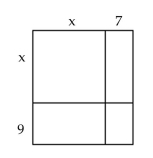
A)
B)
C)
D)
Find the area of the rectangle by multiplying the length and the width of the large rectangle using the FOIL method.

A)
B)
C)
D)

Unlock Deck
Unlock for access to all 127 flashcards in this deck.
Unlock Deck
k this deck
67
Find the product. Assume all variable exponents represent whole numbers.
A)
B)
C)
D)
A)
B)
C)
D)

Unlock Deck
Unlock for access to all 127 flashcards in this deck.
Unlock Deck
k this deck
68
Solve the problem.
Find the area of the rectangle by multiplying the length and the width of the large rectangle using the FOIL method.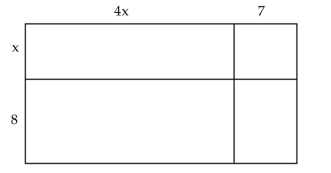
A)
B)
C)
D)
Find the area of the rectangle by multiplying the length and the width of the large rectangle using the FOIL method.

A)
B)
C)
D)

Unlock Deck
Unlock for access to all 127 flashcards in this deck.
Unlock Deck
k this deck
69
Find the product. Assume all variable exponents represent whole numbers.
A)
B)
C)
D)
A)
B)
C)
D)

Unlock Deck
Unlock for access to all 127 flashcards in this deck.
Unlock Deck
k this deck
70
Use the FOIL method to multiply the binomials. Assume any variable exponents represent whole numbers.
A)
B)
C)
D)
A)
B)
C)
D)

Unlock Deck
Unlock for access to all 127 flashcards in this deck.
Unlock Deck
k this deck
71
Use the FOIL method to multiply the binomials. Assume any variable exponents represent whole numbers.
A)
B)
C)
D)
A)
B)
C)
D)

Unlock Deck
Unlock for access to all 127 flashcards in this deck.
Unlock Deck
k this deck
72
Use the FOIL method to multiply the binomials. Assume any variable exponents represent whole numbers.
A)
B)
C)
D)
A)
B)
C)
D)

Unlock Deck
Unlock for access to all 127 flashcards in this deck.
Unlock Deck
k this deck
73
Solve the problem.
Write a polynomial that represents the volume of the open box.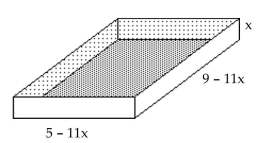
A)
B)
C)
D)
Write a polynomial that represents the volume of the open box.

A)
B)
C)
D)

Unlock Deck
Unlock for access to all 127 flashcards in this deck.
Unlock Deck
k this deck
74
Find the product. Assume all variable exponents represent whole numbers.
A)
B)
C)
D)
A)
B)
C)
D)

Unlock Deck
Unlock for access to all 127 flashcards in this deck.
Unlock Deck
k this deck
75
Use the FOIL method to multiply the binomials. Assume any variable exponents represent whole numbers.
A)
B)
C)
D)
A)
B)
C)
D)

Unlock Deck
Unlock for access to all 127 flashcards in this deck.
Unlock Deck
k this deck
76
Use the FOIL method to multiply the binomials. Assume any variable exponents represent whole numbers.
A)
B)
C)
D)
A)
B)
C)
D)

Unlock Deck
Unlock for access to all 127 flashcards in this deck.
Unlock Deck
k this deck
77
Use the FOIL method to multiply the binomials. Assume any variable exponents represent whole numbers.
A)
B)
C)
D)
A)
B)
C)
D)

Unlock Deck
Unlock for access to all 127 flashcards in this deck.
Unlock Deck
k this deck
78
Find the product. Assume all variable exponents represent whole numbers.
A)
B)
C)
D)
A)
B)
C)
D)

Unlock Deck
Unlock for access to all 127 flashcards in this deck.
Unlock Deck
k this deck
79
Solve the problem.
Write a polynomial that represents the area of the shaded region.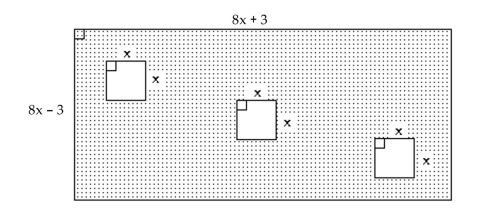
A)
B)
C)
D)
Write a polynomial that represents the area of the shaded region.

A)
B)
C)
D)

Unlock Deck
Unlock for access to all 127 flashcards in this deck.
Unlock Deck
k this deck
80
Use the FOIL method to multiply the binomials. Assume any variable exponents represent whole numbers.
A)
B)
C)
D)
A)
B)
C)
D)

Unlock Deck
Unlock for access to all 127 flashcards in this deck.
Unlock Deck
k this deck



